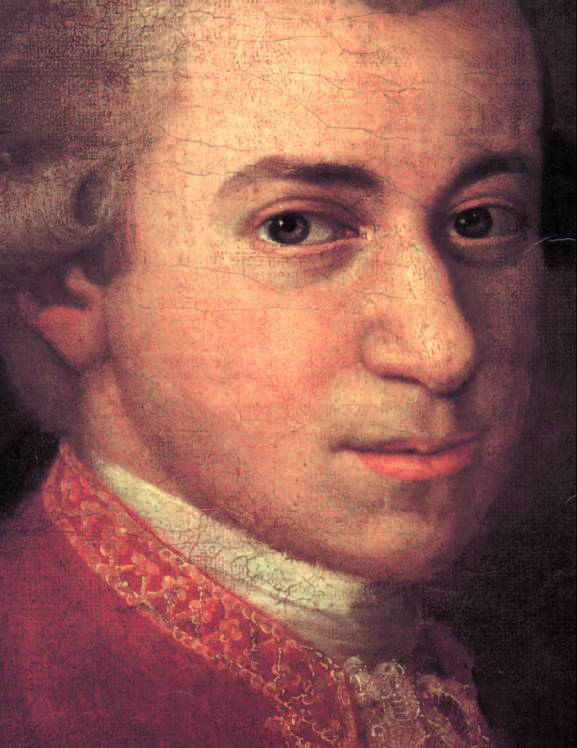
Mozart in Vienna
1781 was a benchmark year for the young and prolific Mozart.
He wrote some of his greatest works that year, and at only the age of 25, which leaves us wonder, what spurred on his creativity?
His opera Idomeneo premiered on January 29 and set him up as one of the leading composers of Vienna. This went together with a cultural expansion of Vienna, which included the opening of the University of Vienna and the completion of the construction on the St. Charles’s Church (Karlskirche). These developments were spurred on under the reign of Holy Roman Emperor Josef II, who considered himself one of Europe’s “enlightened despots.” His reign also saw far-reaching reforms such as the abolition of serfdom and the implementation of religious toleration.
Along with these cultural and social changes, the early years of the 1780s were to become one of Mozart’s most productive years, composing several notable works, including the opera Die Entführung aus dem Serail (The Abduction from the Seraglio), the Symphonies No. 35 Haffner and No. 36 Linz, the Piano Concerto’s No.11 & 12, and several chamber works. He also wrote numerous sacred works, including the Ave Verum Corpus, and the Mass in C minor. This period was considered one of the most creative and productive of his career, and many of these works are still widely performed and cornerstones of the repertoire.
Why was this period of Mozart’s life so creatively fruitful? One factor is that he had recently moved to Vienna and had established himself as a successful and respected musician in the city as both a string player, keyboard soloist and composer. This gave him the financial stability and confidence to experiment with new forms and styles in his compositions. Additionally, he had been appointed as a court musician for the Archbishop of Salzburg, which provided him with a steady source of income and a platform to showcase his music.
Vienna provided Mozart with access to several of the finest musicians of the time such as Michael and Joseph Haydn, Antonio Salieri, Johann Nepomuk Hummel, Christoph Willibald Gluck, and more.
1781 is arguably the year when Mozart had reached a point in his career and craft where he had developed a mastery of his technique. He was able to bring all his talents and experiences together in this period to create some of his most enduring works. Let’s explore some of these brilliant works.
Idomeneo (1781)
Victorian Opera presents a full staging of this brilliant opera in July this year.
The Opera premiered on 29 January 1781 at the Cuvilliés Theatre in Munich, Germany. The story is based on the Greek myth of Idomeneo, King of Crete; his son Idamante; and a tragic promise.
The story follows Idomeneo’s return home from the Trojan War. On his way home his ship is caught in a storm, during which, he makes a vow to Neptune, the god of the sea that if he is saved, he will sacrifice the first person he sees on land. Tragically, the first person he sees on land is his own son, Idamante. The opera deals with the emotional and moral conflict that arises as Idomeneo tries to reconcile his duty as a king with his love for his son.
One of the greatest moments from the opera is Zeffiretti lusinghieri sung by Ilia and reflects Ilia’s feelings of longing and desire for Idamante.
Serenade No. 10, Gran Partita for Winds (1781-82)
Used to great effect in the 1984 film Amadeus, the Gran Partita is considered one of the greatest works in the genre of the serenade and one of Mozart’s greatest works.
Divided into 7 movements, the work is notable for its variety and virtuosity, with each movement showcasing a different aspect of the ensemble’s abilities. The Adagio, for example, is a slow and contemplative movement, while the last movement Molto Allegro is a lively and exuberant conclusion to the work.
Great Mass in C Minor (1782-83)
Composed after his marriage to Constanze and moving to Vienna, this work, which remains unfinished today, was premiered in October 1783 in Saltzberg. In attendance was Mozart’s father and sister, who had not yet met Constanze, who also happened to be singing the Et incarnatus est (part of the 3rd movement Credo) at the premiere.
The Mass is notable for its grandeur and complexity, as well as its use of vocal and orchestral virtuosity. The Credois a particularly striking and dramatic movement, with a powerful fugue that showcases the skill of the choir and soloists. The Sanctus and Benedictus, with their use of solo voices, are also highly virtuosic and expressive movements.
By Evan Lawson.
